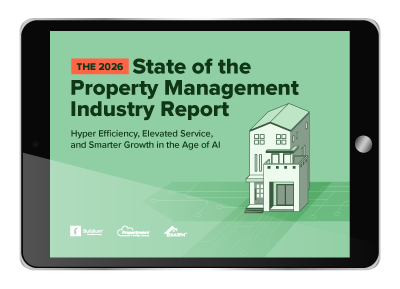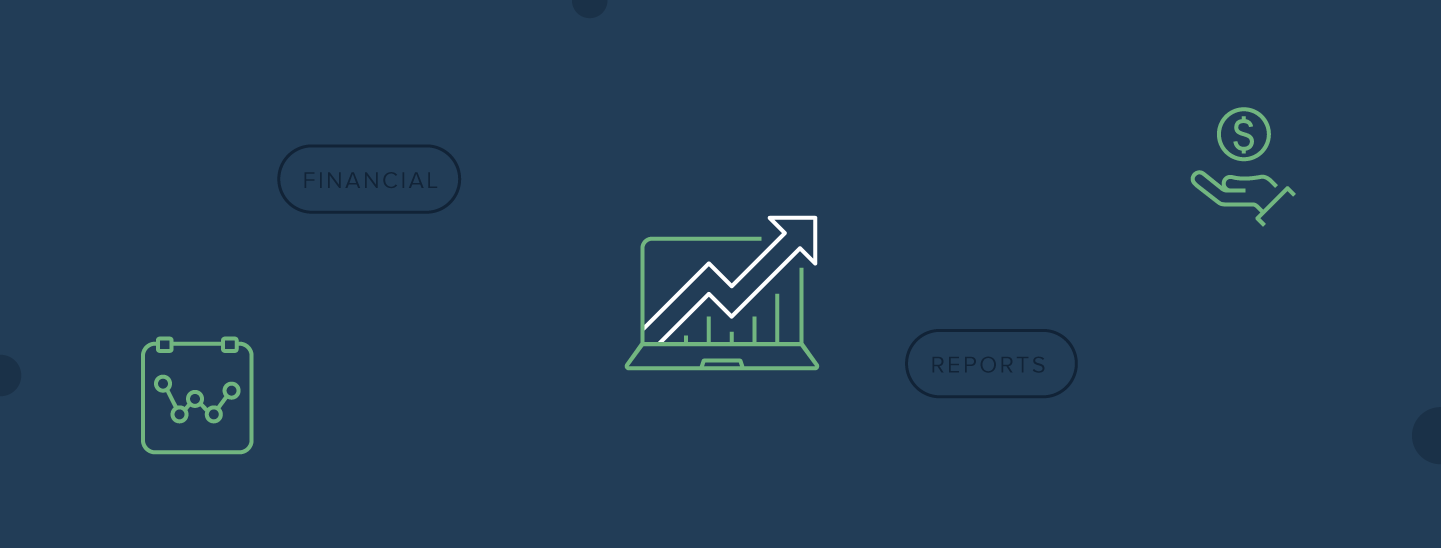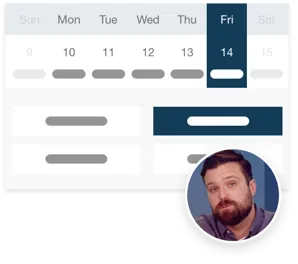For property managers, how results are tracked and shared with owners or teams matters just as much as the numbers themselves. A strong report highlights opportunities, explains challenges, and gives decision-makers the confidence to act, while a basic statement often creates confusion and slows approvals.
Start your free trial today!
Try Buildium for free for 14 days. No credit card needed.
Start Your TrialIn this post, we’ll explore what comprehensive financial reporting really means, what to include in each packet, and the benefits it delivers for both managers and owners. You’ll also find practical steps to make the process efficient, so you can deliver more value without adding extra work for your team.
What Are Comprehensive Financial Reports?
Before you build them out, it helps to clarify the difference between basic reporting and a more complete package that drives action.
Comprehensive financial reports go beyond standard ledger exports. They combine core statements with supporting schedules, variance narratives, and operational context so readers can interpret results quickly. Instead of only showing what happened, they explain why it happened and what should happen next.
Types of Financial Reports
When you design your reporting suite, start with the essentials and add context as you go.
Income Statement: Shows revenue and expenses over a period. A comprehensive version groups revenue by category such as rent, fees, and ancillary income, breaks out controllable versus non-controllable expenses, and includes period-over-period and budget-to-actual comparisons.
Balance Sheet: Captures assets, liabilities, and equity at a point in time. A more robust view highlights restricted cash, security deposits, prepaid expenses, and accrued liabilities, along with notes that explain large shifts since last period.
Cash Flow Statement: Explains how cash moved through operations, investing, and financing. For property managers, include collections efficiency, timing of owner draws, vendor payouts, and capital expenditure cash needs to help owners plan liquidity.
Budget vs Actuals: Tracks performance against plan. Add variance amounts, percentages, and short narratives that call out drivers, such as unit turns, concessions, or seasonal maintenance, and whether the trend is expected to continue.
Importance of Comprehensive Financial Reports
Comprehensive financial reports are your way to build a full picture for both your company and your clients. With that clarity comes some major benefits:
Financial Transparency
Clear, consistent reporting strengthens owner relationships and reduces one-off questions. Granular schedules, standardized categories, and concise notes remove guesswork and align everyone on what the numbers mean.
Informed Decision Making
Owners and internal leaders can evaluate rent strategy, expense controls, staffing, and capital plans with confidence when they have both numbers and context. A consistent package allows apples-to-apples comparisons across properties and portfolios.
Risk Management
Detailed aging, deposit reconciliation, vendor exposure, and reserve levels help identify issues early. You can flag delinquencies, insurance renewals, expiring contracts, and deferred maintenance before they threaten NOI or compliance.
Performance Tracking and Evaluation
Benchmarks, KPIs, and trend lines make it easier to gauge operational health. Analytics tools that provide rolling 12-month views and period-over-period comparisons can make the metrics you collect easier to act on, let you see whether the steps you take are working and where to turn your attention to next.
What to Include in Your Comprehensive Financial Reports
You know the benefits of comprehensive reports, but what actually goes into them? Your reports should balance depth with readability. Here is a practical checklist you can adapt to your portfolio size and owner preferences:
- Executive Summary: A one-page overview of the period, top wins, top risks, and action items. Include KPIs such as occupancy, pre-leased percentage, collected-to-billed ratio, and maintenance resolution time.
- Income Statement with Variance Analysis: Present current period, prior period, year-to-date, and budget columns. For any variance above a set threshold, add a short cause-and-effect note such as: “Turn costs rose due to five move-outs and two down units.”
- Rent Roll Snapshot: Show current leases, rates, concessions, and expiration schedule. Include a 60-day and 90-day look-ahead for expiring leases to support renewal and marketing plans.
- Delinquency and Collections Aging: Break out 0–30, 31–60, 61–90, and 90+ day buckets and trend them over recent months. Call out payment plan participation and expected recoveries.
- Unit Turn and Work Order Detail: Track average days vacant, turn cost per unit, and open work orders by priority. Tie these to vacancy loss and make-ready timelines.
- Balance Sheet Highlights: Emphasize cash position, security deposit liability versus held deposits, prepaid balances, and accrued expenses that will hit next period.
- Cash Flow and Owner Draws: Show operating cash inflows and outflows, reserves, capital calls, and recommended draw amounts with timing guidance.
- Budget vs. Actuals with Forecast: In addition to static budget variance, add a rolling forecast for the next two to three periods that updates based on leasing velocity and known expenses.
- Capital Expenditure (CapEx) Schedule: List approved projects, spend to date, remaining budget, and expected impact on rents or expenses.
- Compliance and Insurance Checklist: Note upcoming inspections, permit renewals, and policy expirations. Include status and responsible party.
- Owner-Ready Documents: Package bank reconciliations, invoice summaries, and deposit accounting so owners have what they need for audits and tax prep.
Tools to Create Effective Financial Reports
To reach the right level of depth and consistency in your reporting, you’ll need the right tools. Otherwise you’ll be stuck spending staff time you don’t have and risk important details falling through the cracks. To make sure that your team has the ability to run detailed reports efficiently, look for specialized tools that fit into each of the following categories or consider comprehensive property management software that brings these features together in one platform.
Accounting Management
Use a property management accounting platform that supports true trust accounting, automated bank reconciliation, and owner statements that roll up by property and portfolio. The platform should be able to link all your rent payments, maintenance invoices, and other bookkeeping data in one system, so that you can get a more accurate and comprehensive view of your finances. If you’re comparing options, our guide to must-have property management accounting tools is a good place to start.
Reporting Capabilities
Choose reporting that delivers both out-of-the-box statements and customizable dashboards. Customization and easy-of-use should be top of mind when you weigh your options. You should be able to filter your data by property, region, asset class, and date range. You should also be able to quickly generate reports (both templated and custom) and export them as file types that you’re comfortable working with and sharing.
Communication Channels
When it comes time to share your reports, you’ll want to be able to rely on communication channels that reduce work for your team instead of adding more tasks to their schedule. A property owner portal is a straightforward way to achieve this. Portals give clients secure, 24/7 access to their reports and statements, so they won’t have to bother you or your team every time they need details. The tool you choose should also let you proactively share important reports both manually and through automated distribution lists that deliver the correct packet to the relevant stakeholder on schedule, every time.
Best Practices for Proactive Financial Reporting
While you start to generate, review, and share your reports with the help of the tools above, be sure to keep a few best practices in mind. These are useful habits around quality, cadence, and stakeholder alignment to instill in your team.
Accuracy
Accuracy starts with structure. A locked chart of accounts and consistent naming conventions keep reports reliable. Monthly reconciliations of bank accounts, security deposits, and escrow balances prevent errors from building up. A maker-checker process, where one person prepares notes and another reviews them, adds an extra layer of control.
Consistency
Consistency makes reports easier to read and compare. A standard monthly packet with the same section order, fonts, and labels ensures familiarity for owners. Uniform variance thresholds and KPI definitions allow for meaningful comparisons across properties. A close calendar and checklist help teams meet deadlines in a predictable way.
Timeliness
Timeliness adds value to reporting. A published close schedule—for example, reconciliations by day three, variance notes by day five, and distribution by day six—sets expectations clearly. Automated data pulls and scheduled sends make it possible to meet these timelines without overwhelming staff.
Customization for Stakeholders
Customization keeps reports relevant. Owner profiles that record each client’s preferred metrics, level of detail, and format allow you to adapt while maintaining structure. Portfolio clients may prefer summaries, while single-property owners need granular details. Including drill-downs for frequent questions, such as delinquency by unit, helps anticipate needs and reduce follow-up.
Simplify Your Reporting with the Right Software
Comprehensive reporting is only as effective as the tools that support it. Instead of juggling spreadsheets and piecing together owner packets by hand, look for a comprehensive property management platform that simplifies reporting. Buildium gives you all the tools you need, balancing efficiency and time savings with accuracy and detailed insights to help you generate reports that move the needle and help you grow your business.
Before taking the first step creating your comprehensive financial reports, keep the main pointers from this post in mind:
- Keep a running list of all the reports you need, from basic income statements, to capex schedules, using our template as a starting point.
- Invest in the right technology that brings accounting, analytics, report generation, and document sharing together.
- Measure your approach using reporting best practices like accuracy, consistency, timeliness, and customization for each stakeholder.
When you’re ready to take the next step, consider testing out Buildium to see how its reporting and other property management features can benefit your business. You can try it free for 14 days or schedule a demo; no risk—or credit card—required.
Frequently Asked Questions
What are comprehensive financial reports in property management?
Comprehensive financial reports are monthly or quarterly packets that include more than just basic financial statements. They combine the income statement, balance sheet highlights, and cash flow with supporting schedules, variance notes, KPIs, and operational context. By presenting both numbers and explanations, these reports help owners and internal leaders understand performance trends and make informed decisions.
Why are comprehensive financial reports important for property managers?
They go beyond compliance and bookkeeping by strengthening transparency, improving communication, and building owner trust. Comprehensive reports also reduce the volume of ad-hoc questions managers receive, since owners have the details and narratives they need upfront. Over time, this consistency speeds up approvals on budgets, projects, and capital plans, creating smoother operations for both managers and owners.
How do comprehensive reports improve decision-making?
By adding context and forecasts, comprehensive reports turn static numbers into actionable insights. For example, pairing delinquency aging with upcoming lease expirations allows owners to anticipate risks and adjust renewal strategies. Likewise, showing capital expenditures alongside operating results helps plan for future cash needs. This level of reporting equips owners to make proactive decisions rather than reactive ones.
What key elements should be included for effective reporting?
At a minimum, effective reporting should cover the executive summary, income statement with variance notes, rent roll, delinquency aging, work order metrics, balance sheet highlights, cash flow, and budget versus actuals with a forecast. Adding a CapEx schedule and compliance checklist provides a more complete picture. When presented consistently, these elements create reports that are both thorough and easy to navigate.
How often should property managers generate comprehensive reports?
Monthly reporting is the standard in residential property management because it keeps owners closely aligned with portfolio performance. However, quarterly reviews can add deeper analysis of trends, budgets, and capital planning. During special situations such as lease-ups, major projects, or unexpected market changes, property managers may find it helpful to provide supplemental reports that address those circumstances directly.
Read more on Accounting & Reporting

